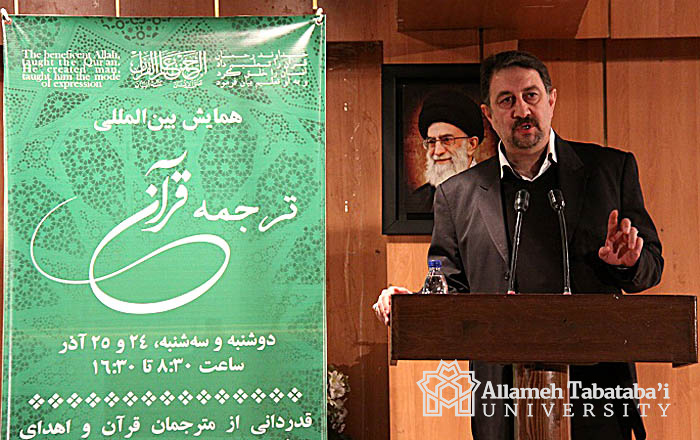Quran’s Difference with Other Linguistic Structures Is Manifests in Translation

At the opening of the International Conference on Quran Translation, Professor Hossein Salimi, ATU President, said: “We are living in the era of the so-called ‘Linguistic Turn’, with humanities and social sciences affected by linguistic concepts.” He then continued: “Today, as Muslims, we can recognize why the most important miracle of Prophet Mohammad (PBUH) is a linguistic one.” Pointing to the vital role the International Conference on Quran Translation plays in social thinking, added that “Quran has determinate meanings which, unlike other linguistic structures, do not change passing from one time and place to the other.”
Emphasizing that no translation of the Quran is Quran, Prof Salimi continued: “However, different translations of the holy Quran act as bridges for transferring its meanings to human minds. As a matter of fact, Quran Translation is an enterprise which transfers the determinate meanings of the Quran, through the channel of language, to the humans’ mental structure and fluid, indeterminate linguistic systems. ATU President concluded his speech by saying that “a linguist cannot become simply a Quran Translator, since mere linguistic knowledge of words is not sufficient for translating Quran. But, it requires an educated translator who can choose from among the lexicon of his language those words nearest to the Quranic concepts.”


